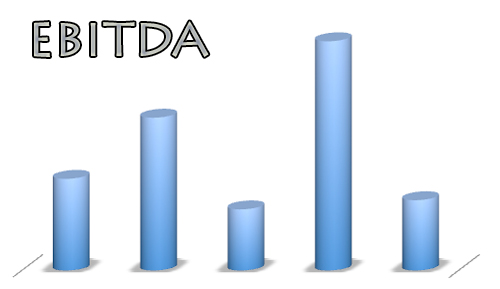
EBITDA is quite simply the measure of the company’s true earnings power. Without the effects of financing or accounting decision, investors can more easily compare the profitability of two companies.
However, EBITDA not being a GAAP measure has allowed companies to change the items included in their calculation from time to time without consequences. Therefore, it’s important not to just compare the raw numbers of different companies and expect to get a good comparison.
Formula
Revenue – Expenses (excluding tax, interest, depreciation, amortization).
When and How It’s Used
In the 1980s, EBITDA became popular and was used to gauge a company’s ability to service debt. This is because depreciation and amortization are non-cash charges and do not affect a company’s ability to generate money that could be used to pay off interest of loans or to retire debt.
EBITDA is also especially important in companies that are losing money because investors are more interested in the company’s ability to reach profitability than the money they’ve lost. Let’s take a look at why:
- Taxes – This can be largely ignored in this context because taxes for a money losing business is misleading.
- Depreciation and Amortization – In an unprofitable business, revenue needs to rise to cover costs. Depreciation and amortization are fixed cost and thus less important because they do not go up when revenue goes up. As an investor, we are much more interested in the variable costs that change when revenue increases.
Misconceptions
Many people believe that EBITDA is the same as cash earnings which is false. EBITDA is not the same as cash flow because it excludes capital expenditure charges. For example, if a company spends $100 million on new computers for all its employees, this charge is ignored in the calculation.
What It Really Means For Us
EBITDA is easy to calculate and great to measure a company’s core earnings strength. It allows us to make a better comparison of two company’s profit potential since it ignores some of the non-core charges that companies take. However, we absolutely need to remember that it is not the same as cash flow. Companies need cash in order to conduct day-to-day activities, and the ability to generate cash is the only measure of true profitability.
Promote or Save This Article
 If you like this article, please consider bookmarking or helping us promote it!
If you like this article, please consider bookmarking or helping us promote it!
Print It | Email This | Del.icio.us | Stumble it! | Reddit |
Related Posts
- Best of Investing School – November 2008
- Book Value
- Net Income
- Definition of Depreciation
- What Exactly is Amortization?


{ 3 comments… read them below or add one }
Thanks for the easy to follow explanation, as I didn’t even know what this was and thus never used it. I will incorporate this into my analysis from now on!
You are doing well. I keep coming back for more on this site. Thanks for another great post!
Great post. I totally agree that profitability is still the best measure though since EBITDA has become a common window dressing tactic.
{ 1 trackback }